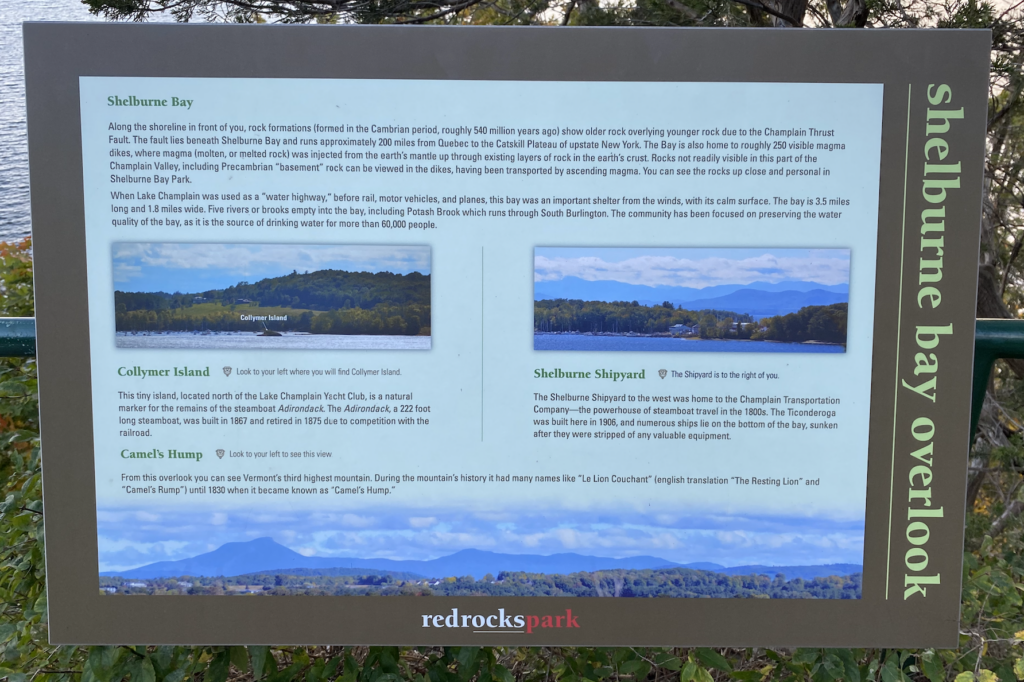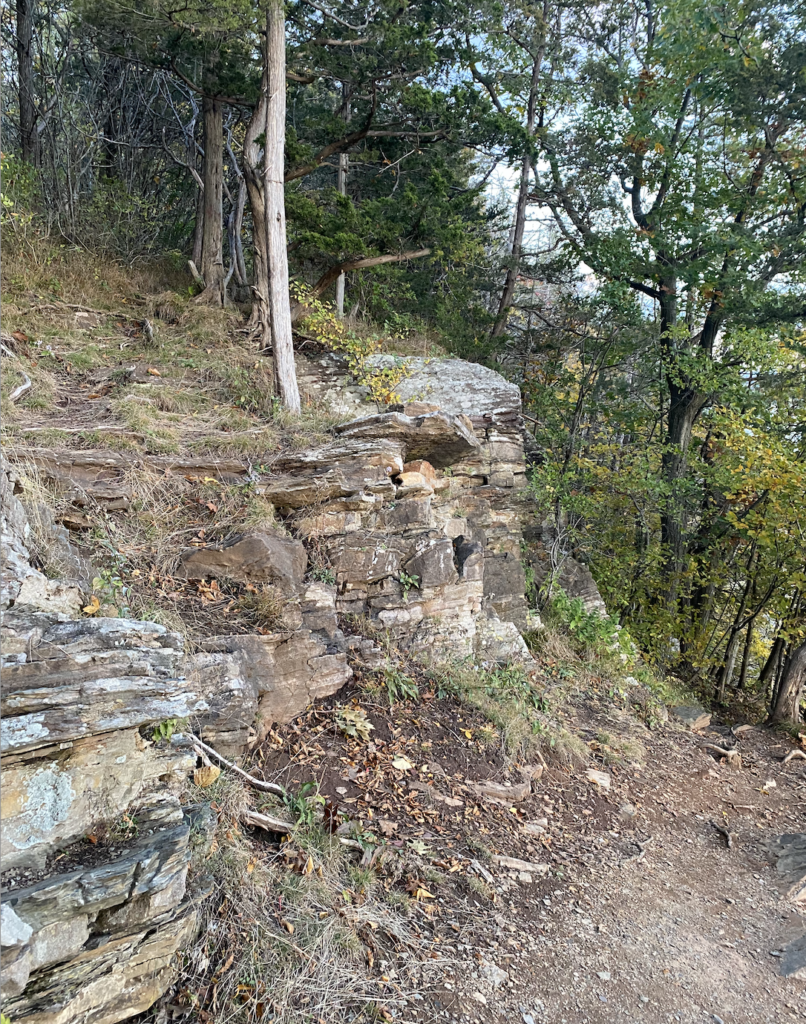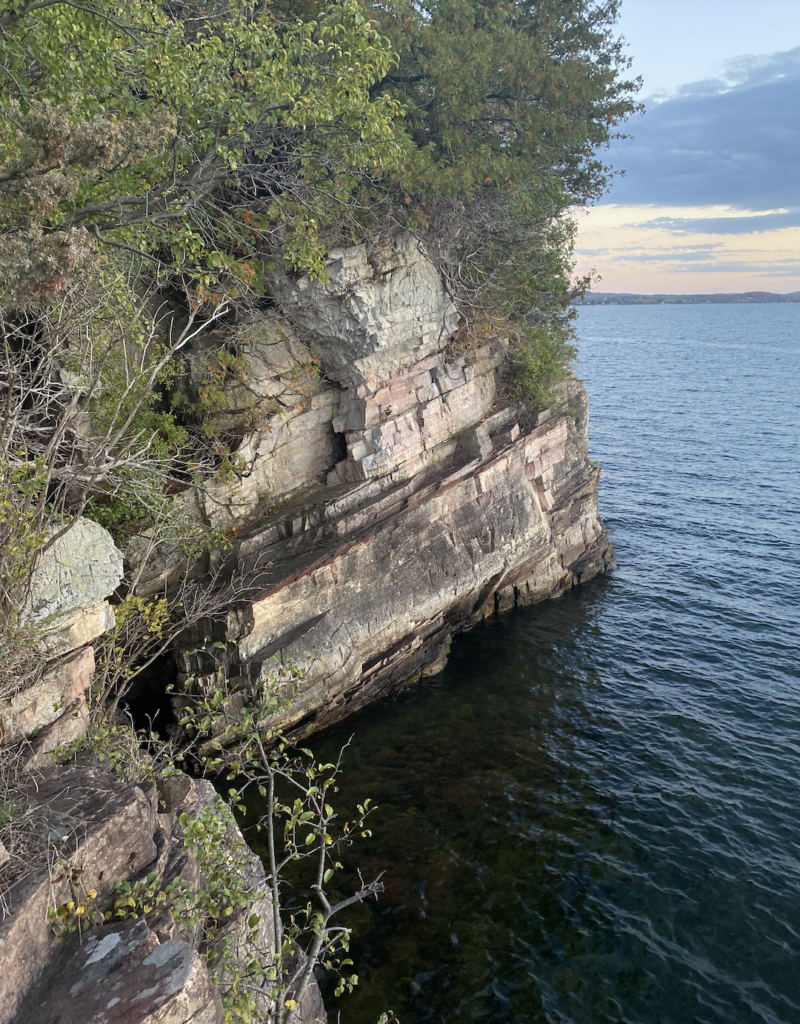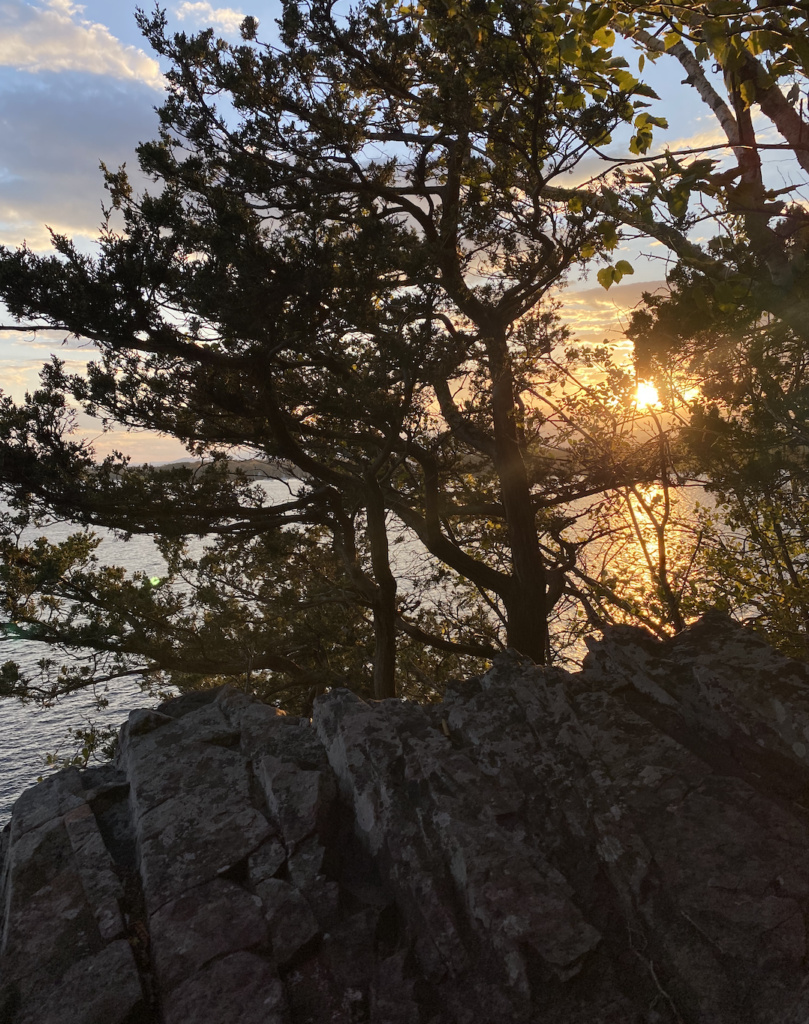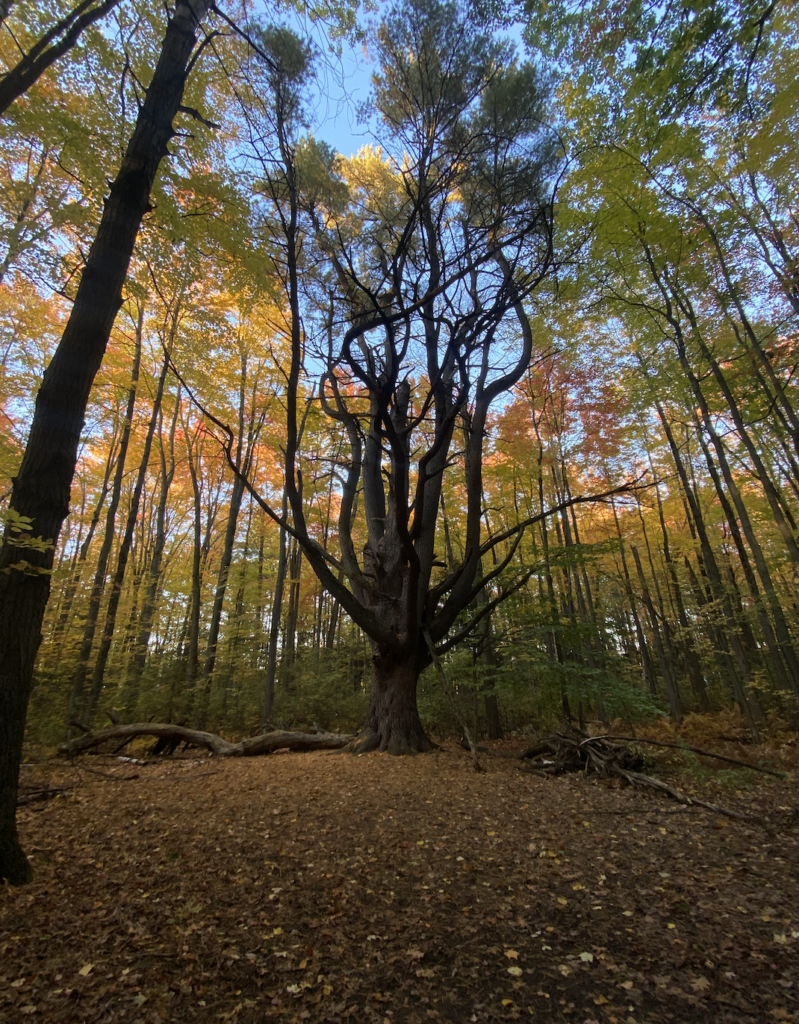Hi y’all!!! I visited the park this weekend, I got there a little late, but the weather and sunset were beautiful! I’ll share some professional pictures in next post but for now I’ll just attach some snapshots I took on my phone!
Easy directions: to get there you can take a bus #5, the station is near a gas station on the main road (bus station is on the S Winooski st.), and it’ll take you to Queen City Park rd. station, and from there it’s a 5 minute walk to the main entrance.
At the park: the park is not very big (or I guess the trails combined together are not very long). It has some maps and signs but it’s not very clear. When you enter the park and find the first map sign, the trail will separate into two: one going downhill (you want to go that way if you want to hit the beach and all of the viewpoints, and maybe go off the trail and find perfect hanging rocks with beautiful views;), and one going somewhat uphill (which is a nice walking distance, you can see tree change from leafy to needles, you can spot some great rocks and see a huge tree- I’ll attach a picture of it!).
Vegetation! : As I mentioned previously, if you choose to go on the East Loop Trail (I think that’s what the longer trail’s called), you will see many leafy trees at the start of the trails- maples, beeches and birches, and white pines- which are the most common trees there. Closer to the edge of the rocks you will notice many northern white cedars as well. There are a lot of buckhorn trees, invasive species, and one and only, the spotlight specie- the Wolf Tree.
I want to give the Wolf Tree its separate “topic’ on my blog, but for now I will only quote Sophie Mazowita, a graduate student (once upon a time..) here at UVM and put her explanation/description from Seven Days Vermont gazette: “150 years ago, the area around and including Red Rocks was pasture. In those days, she says, wolf trees were a common sight on Vermont farmland. While most trees were cut down to make way for pasture, these were spared from the ax because they provided shade for grazing animals, such as sheep and cattle, and some degree of protection from predators, including wolves. Standing sentinel in open fields, wolf trees had no competition for sunlight and took full photosynthetic advantage of the opportunity to grow, both vertically and horizontally, to monumental proportions“. (Bolles, https://www.sevendaysvt.com/vermont/whats-up-with-the-wolf-tree-at-red-rocks-park/Content?oid=2242147)
